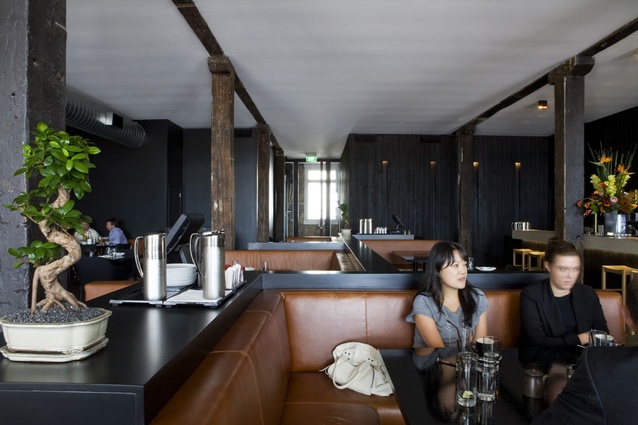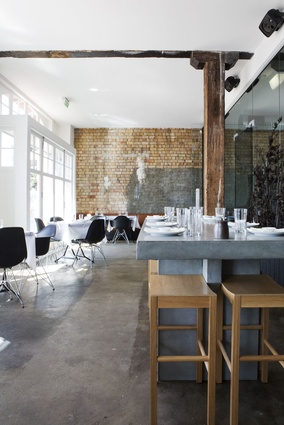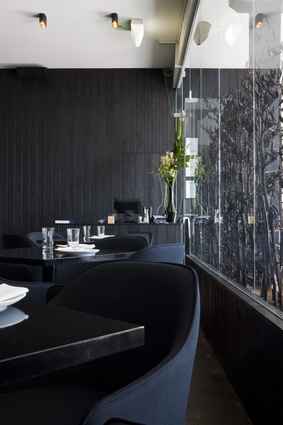An exercise in design restraint
Urbis editor Nicole Stock appraises an exercise in design restraint.
Located in between Auckland’s city port and the Britomart development, new Japanese restaurant Ebisu makes the most of its prime site. The restaurant doesn’t screen itself off from busy Quay Street and the mechanical to and fro of the docks. Instead, within the heritage brick frontage, the designers have created a ‘terrace’ that opens to the north allowing diners to sit in the northern sunshine during the day, or watch the lit-up buzzing container activity at night. Inside, designer Kirsty Mitchell has also embraced this industrial aesthetic, leaving most of the pock-marked brick and concrete walls. In contrast, tan leather booths, slick black vertical boards and minimalist furniture create a gleam of luxury against the rough shell. The subtle interior design has focused on separating distinct areas to make the large space feel intimate, creating specific areas that capture the energy of a bar, accessible and fun for a mid-week lunch as well as being cosy for a evening dinner.
The internal terrace, with tables looking over the harbour and high tables with barstools, has a more casual, relaxed atmosphere, while the comfortable ambient interior centred by the leather booths is much more private. The areas are separated with a frameless glass wall and planted installation, giving an organic softness to the otherwise geometric space. Similarly, the kitchen is open to the dining space, but screened by a glass wall with shelves of sake and whiskey.
The restraint by the designers, the calm palette in black and tan and the acknowledgement of the history of the building have combined to create a restaurant that is an easy complement for the delicious and elegant food served here.















